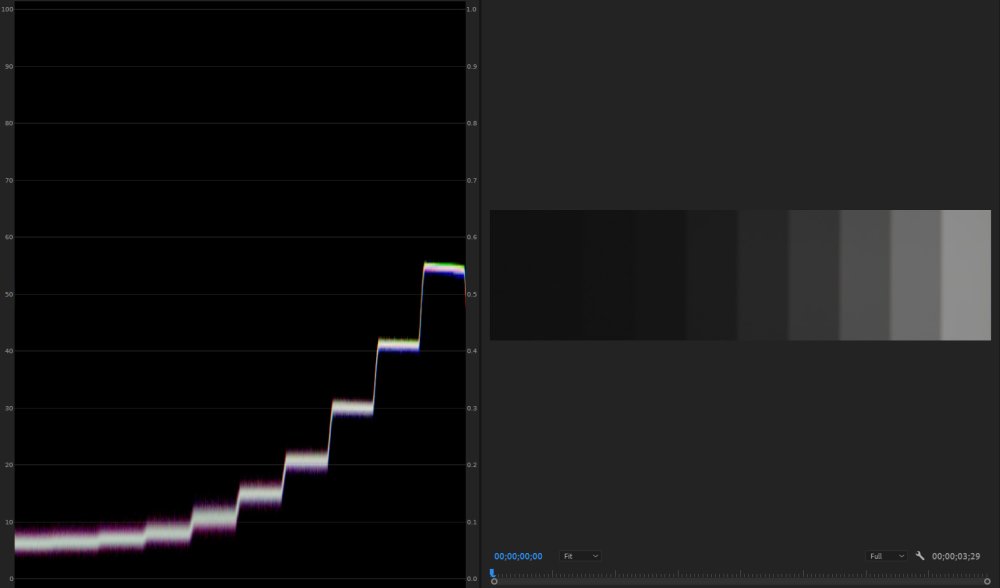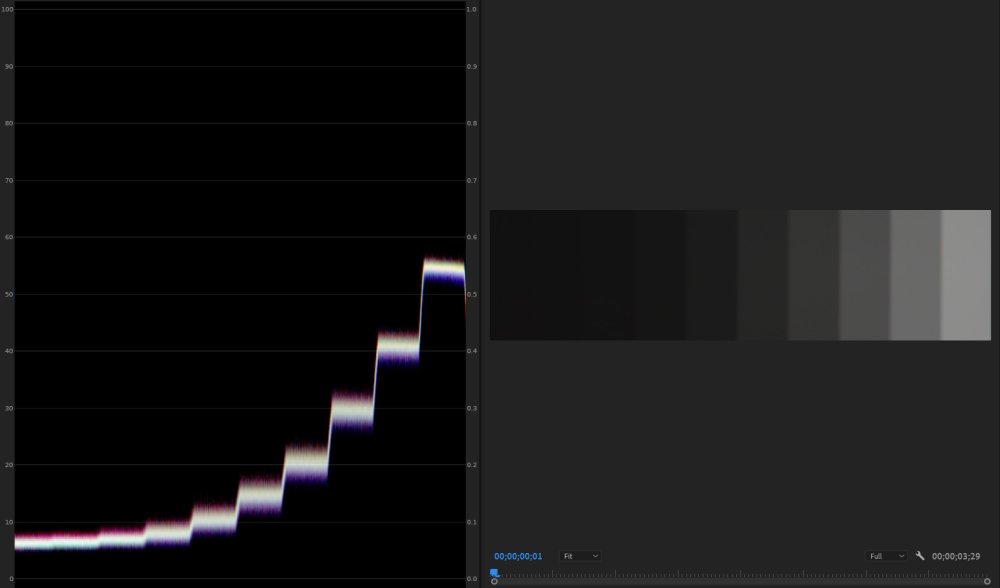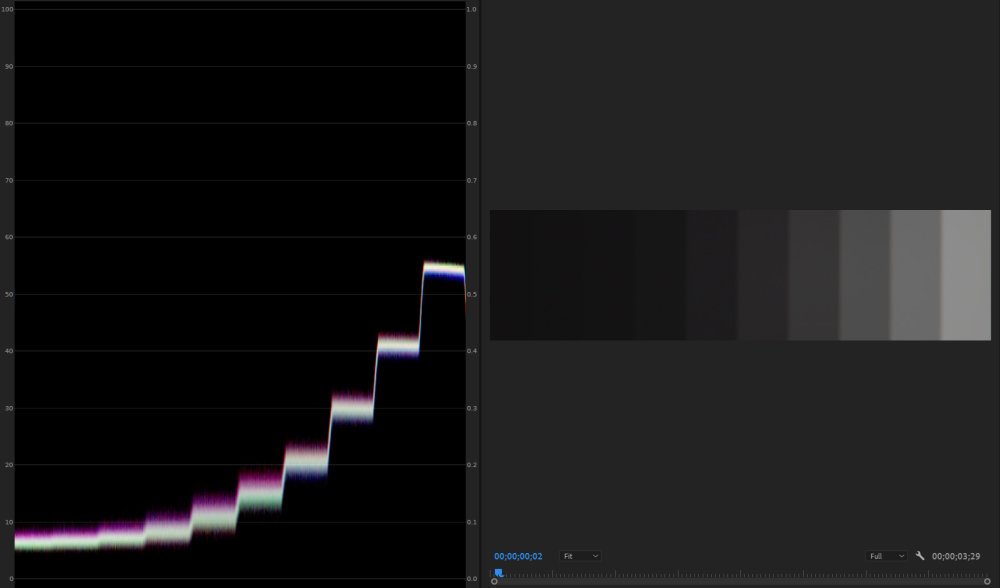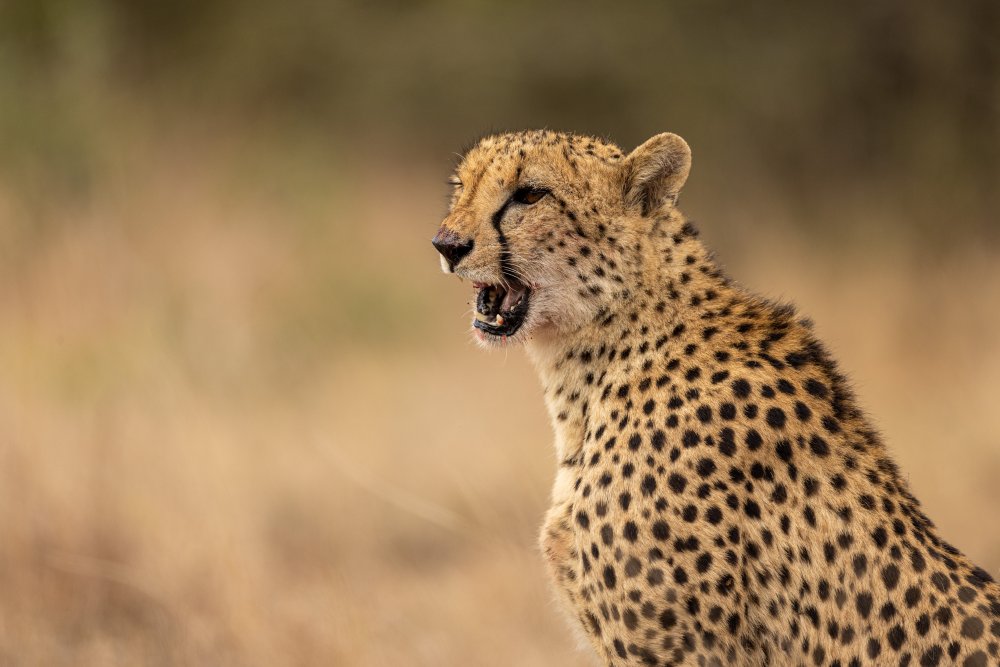Leaderboard
Popular Content
Showing content with the highest reputation on 10/21/2022 in all areas
-
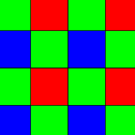
Bitrates. Where do you draw the line?
Katrikura and 2 others reacted to M_Williams for a topic
I probably draw the line around 600-800 mbps, which would be 4.5 to 6GB per minute. I prefer BRAW whenever possible - better than ProRes RAW - and of course it's internal on my BMPCC 6K Pro and BMPCC 4K. I generally shoot Q5 on both, which can average around 5-7GB/min on the 6K and about 2GB/min on the 4K. If I'm doing something that needs green screen work or anything like that, I might shoot Q1 on the 6K, which is a whopping 11-12GB/min or Q0 on the 4K which is about 8GB/min. But that's better than ProRes 422 HQ which is 7GB/min on the 4K. I reviewed the GH6 recently and while ProRes is a great feature to have, it takes up a ton of space, especially if you shoot the open gate 5.8K. Much prefer to just shoot 200mbps H.265 LongGOP (in 5.7K DCI or 5.8K open gate), which is a lot nicer than ProRes 422 HQ which clocks in at 1522mbps (both 23.98p). For 4K DCI I would use the 400mbps All-I H.264 4.2.2 - I wish Panasonic had at least offered H.265 All-I 4.2.2 for the 5.7K DCI and 5.8K open gate, instead of just 4.2.2 All-I ProRes. Supposedly they did this since H.265 is heavy on computers, but my Mac Studio can easily handle it - even my Mac Mini M1 doesn't have a problem with it. For me, I use BRAW whenever possible. It's the best compressed RAW codec out there outside of REDCODE RAW. Smooth as butter to edit and of course seamless integration with Resolve. CinemaDNG provides little benefit for me and produces massive files that are simply unwieldy to deal with. ProRes is more of the a convenience thing than an actual efficient codec. It just works smoothly on a lot of computers without top of the line specs, but once you get beyond 1080 HD, it becomes simply too much storage. I edit off a few SSDs in RAID 5 configuration, then I have some regular HDDs in a NAS for archival storage. Hopefully more compressed RAW options open up in the near future once RED loses their patent in this Nikon suit - at least that's what I predict will happen. It will also be hilarious to me if Nikon, the company that has historically never cared about video or filmmaking, is the one to invalidate their stupid patent. (keep in mind, everything I shoot is narrative film, so high-quality video is necessary - so I'm willing to tolerate higher bitrates, though not excessively so)3 points -
Regarding the motorola, it's great for use with motioncam. All 3 back cameras plus the front facing one work with both 24, 25 and 30 fps. The telephoto also features OIS like the main. Its resolution at 16;9 tops out at 1832p, but the upscale to 2160p is good enough (the attached video shows it). Mics are also great (stereo). It makes for a good all-around pocket camera. Sone more telephoto samples (incuding low light). http://www.youtube.com/watch?v=OxEty-OLOoo http://youtube.com/watch?v=Js4QrmtCJZ01 point
-
As simple as let it go outside the mobile version up there: Amazing outcome, go figure for a 200 bucks device BTW... :- )1 point
-
In addition to my previous post above, I think the optimum amount of processing is having more NR/sharpening than RAW has, and less than the GH5 has. If the FX30 is closer to that mid-point then that's another plus for the camera. Despite not liking Sony all that much (both their company behaviour as well as the design of their cameras) and not wanting to move from MFT to anything but FF, the FX30 has an appeal that I can't understand. Is there some sort of X-factor for this camera? or is it just me?1 point
-
Sony FX30 (S35 FX3)
IronFilm reacted to A_Urquhart for a topic
Sorry, I didn't quite word it correctly. The Venice, FX9 and FX30 (apparently) all have true Dual Base ISO sensors. This means that at ISO 800 and 2500 (for the FX30), there is the exact same noise and dynamic range. The FX6 and FX3 on the other hand have 'dual sensitivities' of 800 and 12800 but 12800 has more noise and less dynamic range than ISO800. They are not exactly the same. Article here explaining it better. https://sonycine.com/articles/what-is-dual-base-iso-/1 point -
DaVinci Resolve On New M2 iPad Pro
Yannick Willox reacted to Anaconda_ for a topic
https://www.instagram.com/p/Cj7LnVcvNLy/?igshid=YmMyMTA2M2Y= Braw will be supported and I would have thought from launch, in Q4...1 point -
Sony FX30 (S35 FX3)
IronFilm reacted to A_Urquhart for a topic
For a lot of my use cases, I'll be using my old Metabone Speedbooster that I had for the FS7 on the FX30 with Leica R glass. Extra stop of light back and FF to boot. Makes the FX30 super flexible. In addition, the Speedbooster means that the 4k 120p mode is now roughly APS-C crop. Winning! I'm also liking the announced Meike EF to E mount adaptor with built in Vari ND. If the quality of the ND is good, I can see the FX30 replacing my 2 BMD P6K Pro's!1 point -
Sony FX30 (S35 FX3)
IronFilm reacted to A_Urquhart for a topic
Doesn't quite work that way. There are plenty of times when shooting with the FX6 that I've found I need more ISO than 800 but really don't need 12,800. 12800 is not a native ISO on the FX6 sensor and there is noise. FX6 is Dual Base ISO...not dual native ISO. A lot of the times, I don't want to shoot at 12800 and use ND when what I really need is an ISO of around 3200. For professional use, the closer native ISO's of the FX30 are far more usable. Sure, if you want to shoot by the light of the moon just because you can, then go for it but usually there is no need. Saying that, the FX30 looks quite usable at 12,800 especially with a bit of noise reduction in post.1 point -
It's also worth pointing out that the IQ that you get from a camera depends on: the codec the bitrate the performance of the camera the processing the camera does prior to compression the quality of the processing algorithm in the camera The C100 downscaled from 4K sensor to a 24Mbps file that was easily better than the 100Mbps 4K files from many cheap cameras. Sadly, in this subject, everything matters.1 point
-

Panasonic GH6
PannySVHS reacted to hyalinejim for a topic
Well, the first thing that's worth mentioning is that I got USB power bank that I can hang from my tripod in its little bag. Now I can shoot all day (from a tripod!) without changing battery or getting into rigging. So that's cool. The other thing is that I had been shooting a bit in DR Boost in order to get extra highlight range and to help with shooting indoors in natural light. BUT! I noticed the midtones were quite noisy so I did a little investigation. I shot a step wedge (from +1 to -8 in whole stops) at various ISO levels, slapped on the VLog to V709 conversion and looked at where the noise is, in a bid to figure out whether I should be aiming to shoot at 250 or 2000DRB in general Here is ISO 250 and it's a familiar noise pattern. Midtones are clean, shadows are a bit noisy: Compare this to ISO 2000 with Dynamic Range Boost on: The extreme shadows are cleaner up to around stop -4, where noise is similar to ISO 250. But from stop-3 all the way up to stop +1 this is clearly much noisier than ISO 250! It's noisy in the midtones and clean in the shadows. Weird! And it looks a bit weird when you see it in a real world clip. For comparison's sake, here's ISO 2000 without DR Boost: Right around the midtones, from stop -1 to +1 the regular old ISO 2000 is cleaner than with DR Boost. Below that point the shadows get noisier in a way we are used to seeing. So what's the conclusion? Well, I use some colour treatments that really push visible noise a bit, especially chroma noise. If I'm going to shoot with DR Boost on I get some distracting looking midtone noise. It depends on the shot but sometimes it's really quite shitty looking. NeatVideo's temporal settings do a good job of cleaning it up, though. So my conclusion is that I'm going to start using a bit of noise reduction again, when I need it. DR Boost is not simply "one stop extra in the highlights" and that's that. It comes at the cost of noise in the midtones. PS: all shots were long GOP1 point -
Haha, that's cool! The "follow focus" for focus-by-wire lenses may not work out too well, though; I've used that same feature on the One Little Remote and while you can focus pretty accurately with the dial, as soon as I hit the record button on either of my BMMCCs, the lens goes out of focus and you have to start over. This affects the Panasonic 12-35 zoom, which is the only focus-by-wire lens I own. Doesn't happen on my Pocket cinema camera, only on the BMMCC, and I've heard similar reports from other users. It actually used to work fine, but at some point it didn't anymore (I'm running the latest applicable firmware on all cameras, but this happened long after I updated firmware to the latest version).1 point
-
Canon EOS R5C
The Dancing Babamef reacted to gt3rs for a topic
1 point



